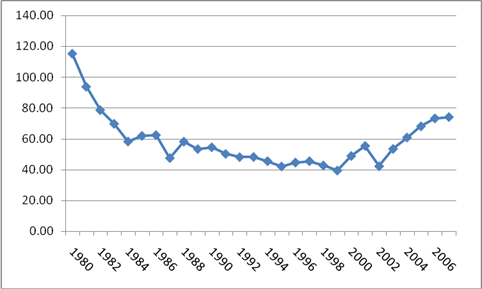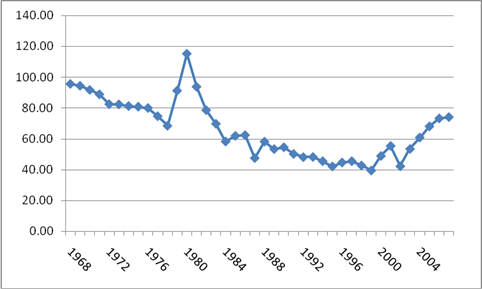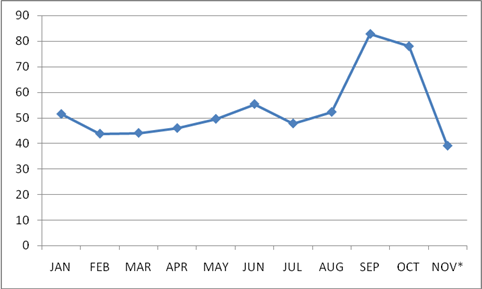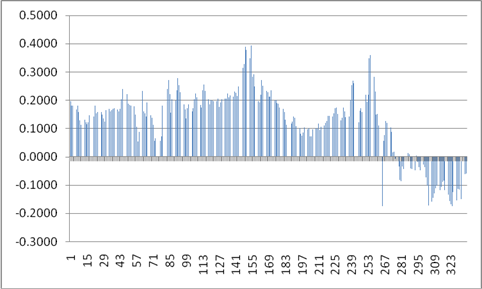This may seem like Bill Wilson and Americans for Limited Government week on my site, but it just so happens they have some very good input on the pressing issue of the moment. Let me start out with Wilson’s take on the GOP opposition to the bailout. I was tempted to use it as a postscript to yesterday’s interview but decided to have it here as part of a standalone post.
Americans for Limited Government President Bill Wilson praised Senators John Ensign (R-NV), Tom Coburn (R-OK), Jim DeMint (R-SC), David Vitter (R-LA) and Richard Shelby (R-AL) for their efforts to oppose the $15 billion bailout package for the Big Three automakers.
There is a growing consensus in the Republican caucus against the bill. Top Capitol Hill sources suggest that the votes simply are not there to get the $15 billion in emergency loans to Ford, Chrysler and GM passed before year’s end.
“It’s about time that the Senate stood against the bailout madness that has permeated Washington this year,” said Wilson in a statement. “These Senators are heroes for fighting against this bill.”
“The American taxpayer cannot and must not be forced to perpetuate the mismanagement of the Big Three by financing failure. There is no excuse for putting taxpayers on the hook for keeping failed companies afloat that could much better be reorganized under normal Chapter 11 bankruptcy,” Wilson added.
Under Chapter 11 bankruptcy protection, companies have the ability to broadly restructure the scope of operations, redo labor contracts, and otherwise scale back in order to emerge from bankruptcy with a profitable business model.
“Everything that Congress says it is attempting to do, to create a deal to reorganize these companies, to return them to profitability, is precisely the purpose of Chapter 11 bankruptcy protection. The $15 billion bailout is just a reason not to go into Chapter 11. In fact, the real intention is to perpetuate bad management and Big Labor excesses at taxpayer expense,” said Wilson.
Wilson also suggested that a “structured” bankruptcy deal that has been floated in the media is just another excuse not to reopen labor contracts, “The Senators shilling for this bailout will stop at nothing to prevent normal Chapter 11 proceedings from occurring, because then the labor contracts would have to be reopened, management might be fired, etc.”
“Anything else that is being put forth by the companies or by Congress is just spin to mask this truth,” added Wilson.
The automakers have suggested that American consumers will not want to buy cars from companies undergoing bankruptcy proceedings. “That is just false,” responded Wilson. “The people are not buying the cars now, which is why they’re in this mess.”
Wilson believes that without bankruptcy, the companies are doomed to failure. “The real question everyone should be asking is, ‘Who is going to want to invest in a company that has to beg the government for loans that cannot be paid back every few months just to keep up its excessive operations?’ If these companies really are in that much trouble, then bankruptcy is their only option,” said Wilson.
“The American people owe a debt of gratitude to Senators Ensign, Coburn, DeMint, Vitter and Shelby for their courageous, principled stand. Any Senator who votes for this bailout will have to answer to their constituents and history for their destructive action,” Wilson added.
Speaking of Senator DeMint, the good Senator from South Carolina had a five-word answer about what may happen if the bailout is passed. And he has a great point.
Today it was learned that the number of people who applied for first-time unemployment benefits “unexpectedly” soared to their highest level in 26 years. Over half a million people applied for benefits last week, which may not sound like a whole lot until you realize that number exceeds the population of the entire Eastern Shore of Maryland where these words are written. Even more telling, that number exceeds the total membership of the United Auto Workers as of 2007, at least according to this Reuters story. And that UAW number is surely not increasing since that date.
So the essence of this bailout is that one group of workers who happen to have a large labor union (which contributes heavily to majority Democrats) backing them would be helped at the overall expense of the rest of us, more of whom joined the rolls of the unemployed last week than the number of workers helped. As I argued earlier this week as well, there’s a number of automakers who employ Americans who won’t get the help and actually could be harmed by any additional regulations put in force by the federal government.
Meanwhile, the overall “official” unemployment figure of 6.7% is probably half that found in the building industry. With the subprime mortgage crisis demolishing the housing market times are tough in my chosen field. When I moved to the Eastern Shore four years ago, I worked on little but condominium projects because there was a large demand to get in on the housing boom, particularly in this resort area. That ceased around the end of 2006 and I haven’t worked on one since. Fortunately, other projects have taken up the slack but the work comes in slowly.
One of the linchpins of Barack Obama’s economic stimulus plan is an “investment” in infrastructure, which reminds me of the Works Progress Administration of Franklin Roosevelt’s era. It’s argued that this effort would help the construction field – and on a temporary basis it just might – but where would the money come from to fund these efforts except from the private sector? To logically follow the money, one couldn’t help but notice that Fedzilla’s gain would have to come from someplace, and that pot would be the cash successful people use to invest and (wait for it) develop buildings!
It appears that robbing Peter to pay Paul has become the new bailout plan in Washington, and the redistribution continues on its merry path.






